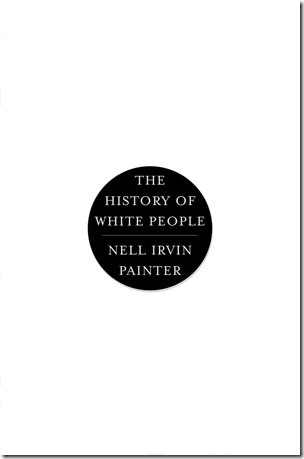The spectacle of Americans choking with rage at Tea Parties, or tossing around racist epithets at Sarah Palin rallies, has our European friends worried.
Recently, French journalist Jean-Sebastien Stehli, writing in Le Figaro, bemoaned the “climate of violence” in American politics, which he identifies as white fear and resentment at the rise of a black president.
Nativist fury is nothing new, however, and the Republic has survived worse. As Nell Irvin Painter shows in her book The History of White People, periodic spasms of white rage and violence are American as apple pie. Consider the Know Nothing Party, active in the 1840s and ‘50s.
Alarmed by Irish immigration, nativists took to burning Catholic churches. A mob 600 strong rioted for three days in Philadelphia in 1844, burning two churches and a number of Irish houses, killing 13 and wounding 15. “Such mob violence made riot the signature Know-Nothing activity,” writes Painter.
Again, in 1891, long after the Know Nothings faded away, a New Orleans mob lynched 11 Italians. What did the Irish of the 1840s and the Italians of the 1890s have in common? At the time neither was included in the “white race.” Nor were Jews, Slavs or anyone else who couldn’t claim Anglo-Saxon descent — no matter how pale their skin.
While the Tea Partiers might find it a shock, everyone else has known for some time that “race” is a social construct, not a biological fact. Stephen Jay Gould forcefully argues the point in the interest of intellectual equality in his 1981 book, The Mismeasure of Man, while Noel Ignatiev approaches the same notion from a different angle in How the Irish Became White (1995).
The Human Genome Project settled the issue resoundingly in 2000, with the discovery that human beings around the globe, regardless of skin color or other superficial characteristics, share 99.99 percent of the same genetic code. Race, declared geneticist J. Craig Venter, is a “social concept, not a scientific one.”
But if race is an idea, not a fact, then how did the myth of “whiteness” — and its mischief-making cousin, “white supremacy” — come into existence? Painter follows the story from antiquity to the present, uncovering fascinating, shocking and sometimes dispiriting surprises.
To Greeks and Romans, “people’s skin color did not have any useful meaning. What mattered was where they lived.” Race had not yet been invented. Another surprise: Most slaves from classical times through the medieval period until the discovery of the New World were not black, but white. Indeed, the word “slave” derives from “Slav,” because of the thriving trade in captives from Eastern Europe. Ironically, white superiority began with the idea that female slaves from this region were the most beautiful in the world.
An Enlightenment-era German scientist, Johann Friedrich Blumenbach, romanticizing the beauty of white people in the region, labeled them “Caucasian,” a term that almost immediately came to connote the white race. The term quickly evolved —an ideal of captive effeminate beauty would not do for the masculine aspirations of Germany, Britain or the United States.
Soon enough, Caucasian superiority came to be identified with Teutonic or Aryan purity, Viking robustness, Anglo-Saxon virility. Although Painter does not underscore the point, the white supremacy advocated by Thomas Carlyle, Thomas Jefferson, Ralph Waldo Emerson, Theodore Roosevelt and others sounds uncomfortably close to Nazi propaganda. A few small accidents of history might have been enough to unite Britain and America in common cause with Hitler.
Painter touches on some of the material Gould examines at greater detail — skull measurements, intended to prove white brains are bigger than anyone else’s. But she is more interested in social and intellectual developments than science. It almost beggars belief that not so long ago Europe was thought to contain three races — Nordic (best), Alpine (tolerable) and Mediterranean (which included the Irish and was not remotely considered “white”).
Although Painter is not a gifted writer, she is always clear and in command of her complicated material. She ranges widely, which necessarily means shallowly, and she never talks down to her intended audience, the general reader. She shows whiteness as refracted through eugenics (which resulted in the sterilization of thousands of inferior whites), as well as class and labor conflict. She tells the stories of scientists such as Franz Boas and Ruth Benedict, pioneers in the rejection of “racial science.”
In the end, Painter sounds a cautiously optimistic note. “Race talk” has not disappeared, she writes, “but ideally we would realize that human beings’ short history relates us all to one another. To speak in racial terms, incessant human migration has made us all multiracial.”
And yet in the United States the “fundamental black/white binary endures, driven by an age-old social yearning to characterize the poor as permanently other and inherently inferior.” By tracing how the fiction of race came into existence, Painter’s book may help to inoculate us against such virulent ideas.
There is no “other.” There is only us.
Chauncey Mabe is former books editor of the Sun-Sentinel. He can be reached at cmabe55@yahoo.com.
The History of White People. Nell Irvin Painter. Norton. $27.95. 496 pp.
